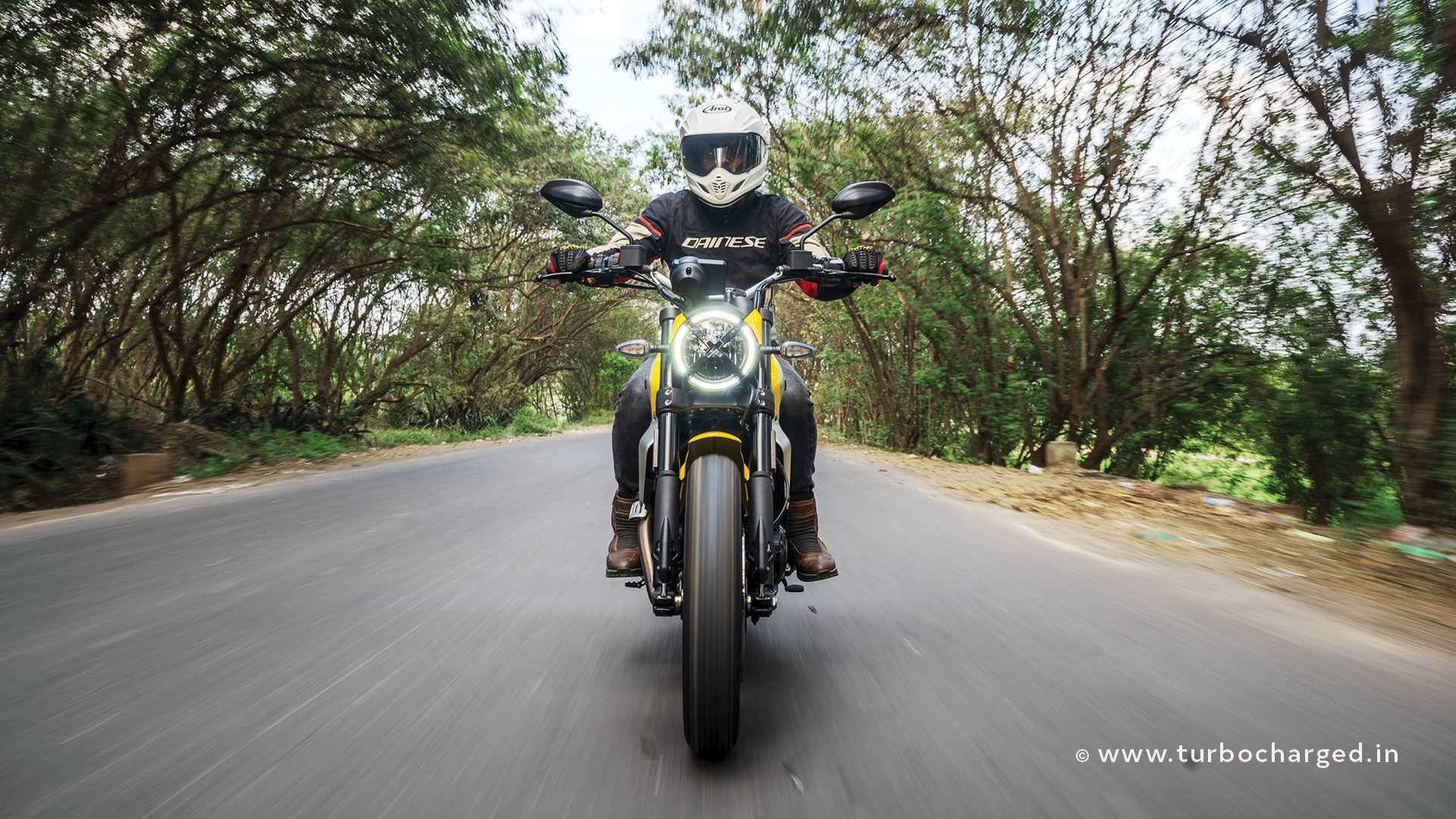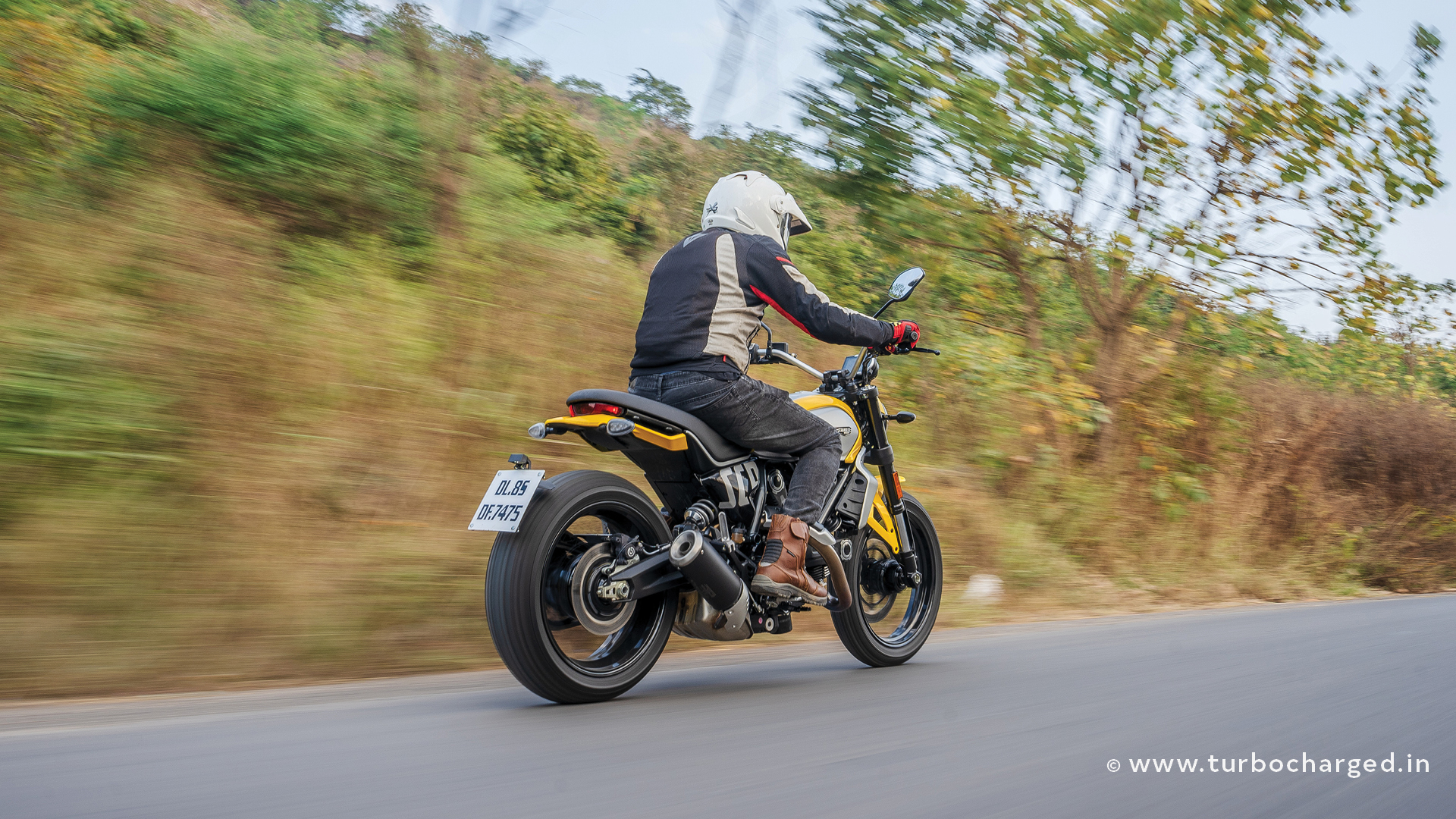When Ducati launched the first-generation Scrambler here in 2015, it offered an affordable entryway to the masses but more importantly, it offered the undiluted essence of a Ducati – fast raw excitement – at a palatable price point. Owing to stringent emission norms, the Scramblers that followed lost some of that essence and by extension, the charm of the Scrambler. The second-generation Scrambler receives a comprehensive update that ticks a lot of boxes but does it bring the essence back?

I think yellow is the right colour for the Scrambler despite it being a Ducati. The colour helps it stand out even amidst the sea of red Ducatis at the dealership. I’m glad that Ducati hasn’t messed with the lines of the Scrambler, it’s clean and minimalistic. I really like the X on the round headlamp and the rear tyre hugger that accentuates the rear and makes it look larger than it feels to ride. That’s the beauty of the Scrambler, while it looks large enough to qualify as a mid-capacity motorcycle, it is compact enough to appeal to novice riders. More importantly, even seven years later, the Scrambler’s quintessential Italian design turns heads. A look at the Scrambler and you won’t be able to discern that 70 percent of the motorcycle has changed. It also points out that the updates are mainly under the skin. Let’s talk about the most significant update first – electronics.

Immediately apparent is the new 4.3-inch TFT instrument console. It looks as crisp as the more expensive Ducatis and offers a plethora of information, with cool touches such as the top right corner of the display flashing yellow when traction control intervenes. The Scrambler finally gets ride-by-wire which allows for two riding modes — Road and Sport. It even gets 4-level traction control, cornering ABS and optional up-down quickshifter. It allows more flexibility to customise your ride and more importantly, adds a sizable safety net for what would be a beginner big bike for many.
The powertrain is still the same air-cooled 803cc Desmodue L-twin engine, pumping out 73PS and 65Nm. However it is now lighter and coupled with a new frame, helps shave four kilos off the Scrambler. While we at TURBOCHARGED extensively test whatever comes our way, I had the good fortune of picking up the Scrambler at Mumbai and riding it down to Pune so while the ride was long, it started with the notorious Mumbai traffic. Regardless of the engine speed, the Scrambler effortlessly picks up speed, accompanied by a dramatic rumble from the exhaust. It delivers a mechanical sound, full of intent, underlining its European industrial heritage. There were times I was able to open the throttle wide and revel in the pace with which large gaps in traffic evaporated in front of the grunt. The L-twin’s torque-laden delivery makes accelerating addictive, and I found myself slowing down and downshifting, just to enjoy the surge of torque. The ride-by-wire throttle and traction control offer a modicum of predictability, but it has a wild side which can catch you unawares. But that also makes it all the more exciting.

Performance aside, the engine transfers significantly less heat to your shin thanks to a new exhaust header which allows the air-cooled motor to radiate heat more effectively. It still runs a bit hotter than I’d prefer but is something I can live with on a daily basis. The traffic also let me properly test out the updated gearbox which feels slicker with a lightweight clutch action.

Fun engine aside, the lightweight chassis allows you to indulge in antics like slicing through traffic. The new frame is lighter and now gets a bolt-on subframe which should make it easier to service. The Scrambler has been a light and flickable motorcycle which coupled with the low 795mm seat is easy to ride. The seat is flat and wide, offering the right amount of cushioning to make it comfortable for long rides, as I found out on my 200km-long non-stop intercity trip back to Pune. That said, I would love a bit more room for my five-foot ten-inch frame.

The Scrambler is quite stable at highway speeds. That said, the aggressive-profiled Pirelli MT 60 RS tyres feel a tad vague especially at the front at high speeds. They however impress with their grip in corners allowing me to push the Scrambler through the turns. It isn’t an outright corner carver but is quick enough for you to enjoy your weekend ride in the hills. The Brembo brakes offer excellent stopping power and good feedback while the cornering ABS offers the least amount of intrusion.
It does justice to the Scrambler name too, with its ample ground clearance and dual-purpose tyres but that said, the riding position is more set up for on-road riding than off it.

The Ducati Scrambler Icon 2G is priced at ` 10.39 lakh, ex-showroom making the most affordable Ducati one of the most expensive middleweight motorcycles in India. However, the Scrambler is one of those uncommon motorcycles that offers enough performance to keep experienced riders entertained, while being friendly enough to accommodate novice riders. It’s a rare combination which the Scrambler achieves without taking away the hooliganism of the first-generation model which made the Scrambler the best selling Ducati in modern times. As to the big question, the new Scrambler brings back the essence of the original while making it friendlier to ride and own.










